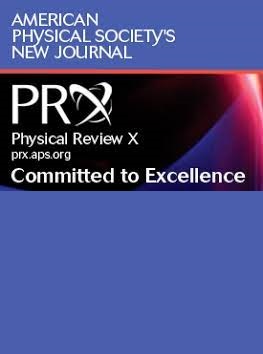Chaperone-Driven Entropic Separation of Amyloid Nanofilament Bundles
IF 11.6
1区 物理与天体物理
Q1 PHYSICS, MULTIDISCIPLINARY
引用次数: 0
Abstract
The disassembly of misfolded protein aggregates is a requirement for the proper functioning of cells. It has implications in multiple neuropathologies, such as Alzheimer’s and Parkinson’s diseases. The active unbundling of fibrillar aggregates has recently been identified as a key rate-limiting step in the disassembly process. However, the nature of the underlying molecular mechanism remains an outstanding question. Here, we develop a coarse-grained computational approach from the atomistic structural information and show that the interactions of molecules tethered to fibrils lead to entropic forces consistent with the unbundling process observed in amyloid α-synuclein disaggregation by Hsp70. We uncover two main types of entropic effects, categorized as intraprotofilament and interprotofilament, which are differentially affected by the system parameters and conditions. Our results show that only highly efficient chaperone systems can overcome the free-energy cost of the lateral association between two protofilaments. Through the analysis of cryoelectron tomography and high-speed atomic force microscopy data, we find that the conditions for highly efficient entropic force generation are those typically achieved with cochaperone networks and ATP hydrolysis, which require energy expenditure but do not provide an enthalpic component to the separation force. We highlight the implications of these results for the design of targeted therapies for the underlying neuropathologies.求助全文
约1分钟内获得全文
求助全文
来源期刊

Physical Review X
PHYSICS, MULTIDISCIPLINARY-
CiteScore
24.60
自引率
1.60%
发文量
197
审稿时长
3 months
期刊介绍:
Physical Review X (PRX) stands as an exclusively online, fully open-access journal, emphasizing innovation, quality, and enduring impact in the scientific content it disseminates. Devoted to showcasing a curated selection of papers from pure, applied, and interdisciplinary physics, PRX aims to feature work with the potential to shape current and future research while leaving a lasting and profound impact in their respective fields. Encompassing the entire spectrum of physics subject areas, PRX places a special focus on groundbreaking interdisciplinary research with broad-reaching influence.
 求助内容:
求助内容: 应助结果提醒方式:
应助结果提醒方式:


